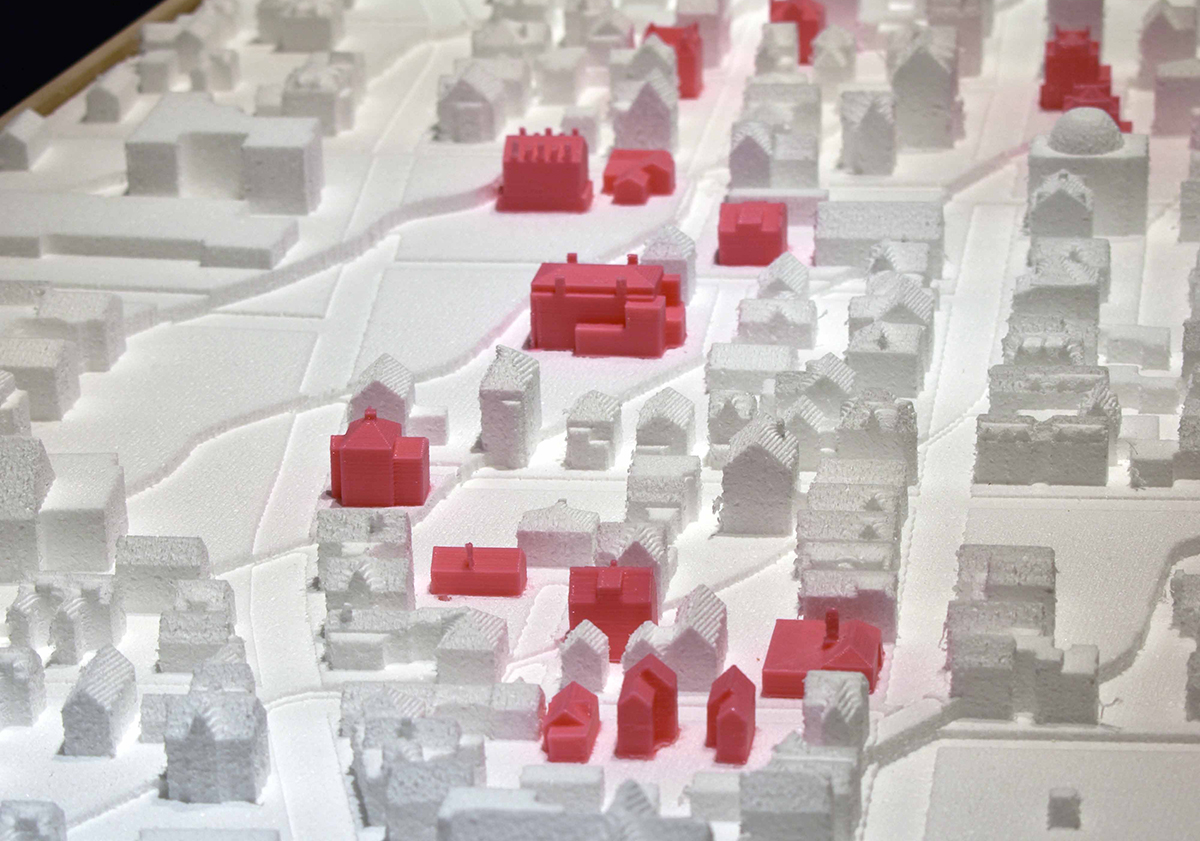
12.12.17 - MArch student Pedram Karimi contributes to the Black Spaces Matter exhibition at BAC's McCormick Gallery
First year Master of Architecture student Pedram Karimi was among the contributors to the exhibition Black Spaces Matter, now on at the Boston Architectural College's McCormick Gallery. Running until January 29, 2018, the exhibit explores the "form and function of interracial neighbourhoods" through an in-depth study of the abolitionist community new New Bedford Whaling national Historical Park in New Bedford, Massachusetts.
"In recent years we have seen a growing body of literature on race and architecture; however, this scholarship has focused mostly on the negative side of such built environments," explains the event listing. "This exhibit celebrates the aesthetics and architectonics of a neighborhood where many former slaves lived side-by-side with the rest of the population and engaged multiple aspects of the city's interracial architecture."
Karimi's contribution — which included help making a large-scale digitally fabricated urban model and diagram of the so-called Abolitionist Row of New Bedford — stemmed from year-long research in New Bedford. Karimi also created several architectural drawings and panels, as well as visualizations of several architectural and landscape projects.
The exhibition was a collaborative project that involved filmmakes, VR specialists, architectural historians and community stakeholders. Local New Bedford experts partnered with students and faculty from the University of Massachusetts Dartmouth and Boston Architectural College to highlight "a lesser-known progressive interracial neighbourhood in the United States."
Massachusetts abolished slavery in 1783, more than 80 years before the Thirteenth Amendment; however, federal law supporting slave owners superseded this law and there were cases of slaves being "reclaimed" from Massachusetts in the years that followed. A strong network of abolitionists, both black and white, gave New Bedford its claim to fame that no slave was ever forcibly "reclaimed" from it.
New Bedford's architecture reflects a period of relative racial equality and tolerance in "the city that lit the world" during its whaling boom. This neighborhood includes a mixture of Gothic Revival, Federal, Greek Revival, and early Italianate homes, as well as modest cottages. Important historical figures, such as Fredrick Douglass and Lewis Temple, resided in these homes.

